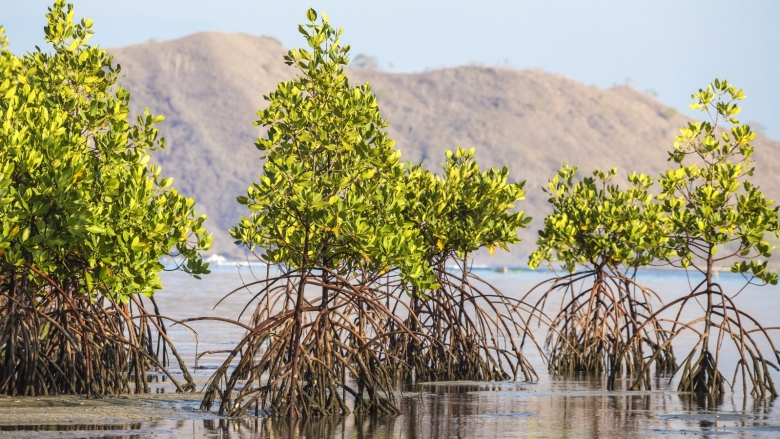“In 2007, my father asked people to join him to plant mangroves, but only a few were interested. Now, we feel the impact of beach abrasion on our daily lives. The sand began to erode, and many of the islands around Yensawai began to disappear,” said Konstantinus Saleo, an advocate for nature preservation in West Yensawai, Raja Ampat Islands, located in the eastern part of Indonesia.
For people living in coastal areas, like Konstantinus, mangroves are not just mere plants. Mangroves, which grow on the coastline and river mouths, serve as a barrier to seawater abrasion and reduce the risk of floods. They are the guardians of local homes and livelihoods.
These ecosystems provide shoreline protection from climate-related and other disasters such as storms and tsunamis and reduce flood-risks, inundation, and erosion. – 3.1 billion tons – equivalent to the greenhouse gas emissions produced by approximately 2.5 billion vehicles driven for one year.

Indonesia holds 3.5 million hectares of mangroves, about 23% of the world’s total, and is the most diverse with 92 true mangrove species. The remaining loss is due to conversion to palm oil plantation and coastal development for urban expansion.

Indonesia has responded to the threats facing mangroves ecosystems
The government of Indonesia is already working to enhance the protection of mangroves, for instance by introducing spatial plans, a system for resolving land use conflicts and balancing environmental and economic considerations by delineating zones for specific uses. Similarly, the government has made substantial progress in expanding Marine Protected Areas to over 23 million hectares.
On top of conservation efforts, the government has set an ambitious target of rehabilitating 600,000 hectares of mangroves by 2024. The government has also included labor-intensive mangroves restoration as part of the country’s National Recovery Program. The Coordinating Ministry for Maritime Affairs and Investment (CMMAI) is mandated to coordinate the related ministries and agencies, including Ministry of Marine Affairs and Fisheries, Ministry of Environment and Forestry, and the Mangrove and Peatland Restoration Agency to support mangroves rehabilitation across provinces in Indonesia.



